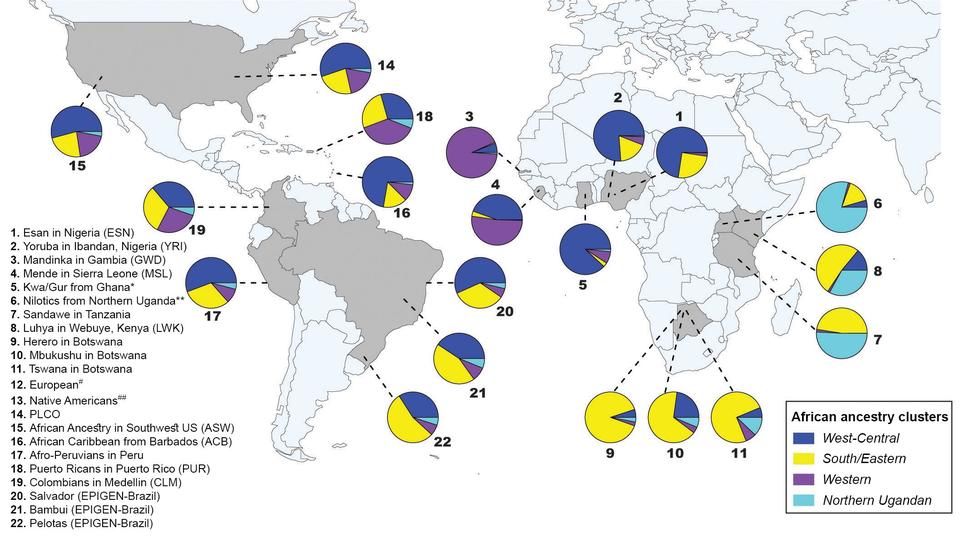Leveraging Genetics to Study African Ancestry in the Americas
, by DCEG Staff
Between the early 16th and mid-19th centuries, the Transatlantic Slave Trade brought more than 9 million Africans to the Americas. Previous genetic studies have estimated overall African ancestry in the Americas, however details about the distribution of African populations across the Americas, and their contribution to ancestry, were unknown.
DCEG investigators in collaboration with researchers in the Federal University of Minas Gerais, Brazil, conducted a study to determine how different African groups contributed to the genetic structure of Caribbean, as well as, North, Central, and South American populations. They found that individuals of West Central and Western African ancestry were more prevalent in the northern latitudes of the Americas, while individuals of South and East African ancestry were more prevalent in southern latitudes of the Americas. These findings were published March 3, 2020, in Molecular Biology and Evolution.
The investigators also report a significant decrease in genetic diversity between-populations in the Americas, compared to regions of origin in Africa. In addition, they determined that the majority of the intercontinental admixture occurred between 1750-1850 which suggests that this time critically shaped the structure of the African gene pool in the Americas.
Matching their genetic analysis to historical records, the investigators determined that the distribution of African ancestry was largely shaped by geographical factors such as the latitudinal proximity, and wind and ocean currents that shaped primary navigation systems of the North-Atlantic, with voyages mostly to North America, and the South-Atlantic, with voyages predominantly to Brazil. Geopolitical factors such as European colonial influences and possessions also influenced the distribution.
This study provides significant evidence that genetic analysis can be used to trace ancestral origins of different populations and contributes to our understanding of the mechanisms of genetic diversity, which may open new avenues of research.
Reference:
Gouveia MH et al, Origins, Admixture Dynamics and Homogenization of the African Gene Pool in the Americas. Mol Biol Evol. March 3, 2020. DOI: 10.1093/molbev/msaa033. [Epub before print].
